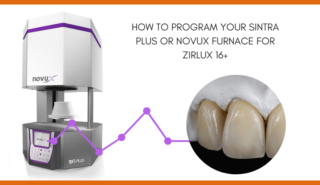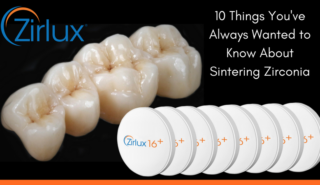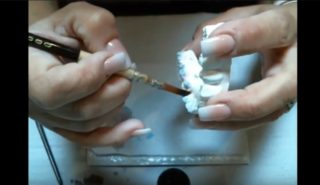Top 5 Questions Your Clients Will Ask About Zirconia
June 13, 2017

Below are 5 common questions clients ask about zirconia that we have discovered and the explanations we would answer with.
- What kind of cement should I use?
Answer: The bond strength really begins before the cement selection. First, after try in, it’s imperative to clean the restoration to remove all saliva. Research has indicated that Ivoclean applied to the inside of a zirconia restoration dramatically increase cement adhesion to the zirconia. Further studies have confirmed that ceramic primers such as Clearfil™ Ceramic Primer, by Kuraray, and resin cements such as Panavia™ 21 and Panavia™ F 2.0, also by Kuraray, that contain the adhesive monomer provide superior and long-term durable resin bonds to zirconia. Check out the cementation guidelines for Zirlux here.
- What kind of tooth preparation do I need for zirconia crowns?
Answer: For best results, I recommend a light chamfer preparation. One of the advantages of zirconia: even at just 0.6mm it’s still very strong. The chamfer enables better control of margin accuracy through manufacturing. For occlusal reduction, 1mm is the minimum requirement to maintain some nice anatomical detail. The preparation should have smooth corners avoiding any jagged edges.Keeping the prep at the crest of the tissue is likely the best margin placement for most indications. Supra gingival preps are also great if not in the esthetic zone.
- What is the best zirconia?
Answer: Difficult question, I’m not sure there is a really good answer to this one. For starters, many disc manufacturers use powder produced by Tosoh of Japan. The disc manufacturing process does require an exacting manufacturing process of pressing and pre-sintering but many (not all) disc manufacturers are now doing this very well. As a result, there are many quality discs available. What is more important, is the variety of discs and how they are managed in the lab. For instance, any anterior zirconia crown should be milled from the newer “anterior” zirconia materials. This is the category of materials that has additional translucency and 600-720 MPa flexural strength. For bridgework, we should be using the high-trans materials in the 1100 MPa range. Next, depending on laboratory technique, do you use a multi-shaded, pre-shaded, or white disc with paint process for green state coloring? All can be best-in-class.
- Why do my zirconia crowns always look too bright?
Answer: First, this is much more prevalent with the high translucent (HT) materials than it is with than newer super translucent zirconia materials. Due to the opacity, the HT material looks brighter in the mouth than often seen on the bench. For improved match, many HT materials will look better if shaded one shade darker than the adjacent teeth.
- Should I layer all anterior zirconia restorations?
Answer: There is really no single correct answer to this question. Some cases will require layering to obtain a matching restoration. Take for example a single central incisor that needs to match a multi translucent and multi colored adjacent tooth. On the other hand, new materials such as the newer generation of super translucent materials can be amazingly life-like. If providing six single anterior units, the esthetics of this material will most likely be highly acceptable. In conclusion, it’s best to answer this on a case by case basis.
Thanks for reading,
Your Zirlux Crew



